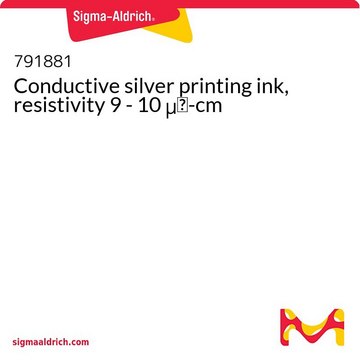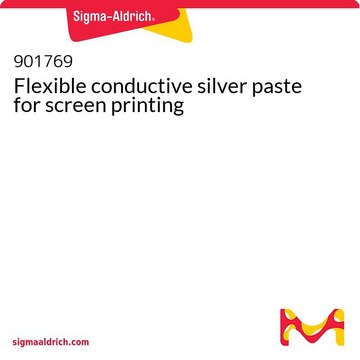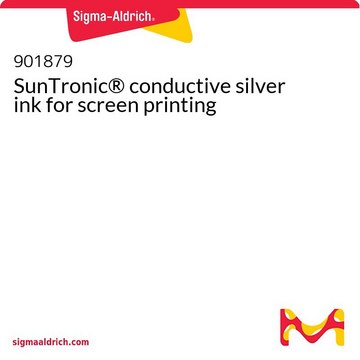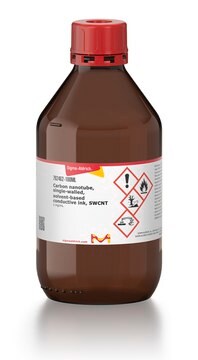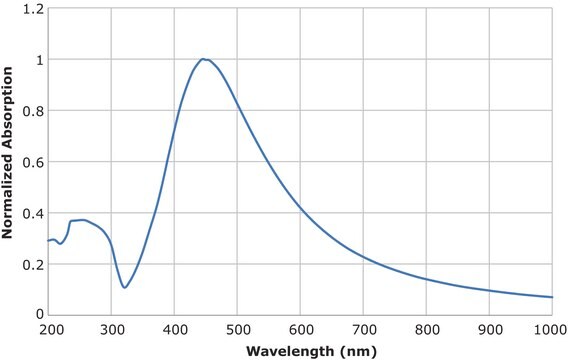791903
Conductive silver printing ink, resistivity 30 - 35 μΩ-cm
Synonyme(s) :
Dyesol® DYAG350 conductive silver ink, Screen printable silver paste
About This Item
Produits recommandés
Description
volume resistivity 30 - 35 μΩ-cm at a 180°C cure temperature
Forme
paste (white)
Composition
Solids content, 65-75%
Viscosité
6000-9000 mPa.s (at shear rate of 10 sec-1 at 25°C)
Description générale
Application
This Conductive Silver Printing Ink is comprised of a mixture of pure silver particles and organometallic silver compound in an organic medium. When printed on polyester (PET or PEN) films and then cured at 150 - 180°C, the particles consolidate to form a chemically-welded, continuous silver track to yield low bulk resistivity.
Informations légales
Mention d'avertissement
Warning
Mentions de danger
Conseils de prudence
Classification des risques
Aquatic Acute 1 - Aquatic Chronic 1 - Eye Irrit. 2 - Skin Irrit. 2
Code de la classe de stockage
10 - Combustible liquids
Classe de danger pour l'eau (WGK)
WGK 3
Point d'éclair (°F)
174.2 °F
Point d'éclair (°C)
79 °C
Faites votre choix parmi les versions les plus récentes :
Certificats d'analyse (COA)
Vous ne trouvez pas la bonne version ?
Si vous avez besoin d'une version particulière, vous pouvez rechercher un certificat spécifique par le numéro de lot.
Déjà en possession de ce produit ?
Retrouvez la documentation relative aux produits que vous avez récemment achetés dans la Bibliothèque de documents.
Les clients ont également consulté
Articles
The ability to pattern conductive electrodes is technologically relevant for several applications, including photovolatics, displays, sensors, and biomedical devices.
Dr. Chan and researchers highlight flexible transistors are the building blocks of next-generation soft electronics. Among all the reported material systems that can be fabricated by researchers, such as circuits, biosensors, stretchable displays, and others,1–5 small molecular weight organic semiconductors are among the most promising candidates for flexible transistor applications. For these small molecular weight organic semiconductors, the semiconductor forming the conductive channel dominates the device performance.
Dye-sensitized solar cells (DSCs) are 3rd generation solar cells combining the promise of high efficiency with low production costs.
Professor Tokito and Professor Takeda share their new materials, device architecture design principles, and performance optimization protocols for printed and solution-processed, low-cost, highly flexible, organic electronic devices.
Notre équipe de scientifiques dispose d'une expérience dans tous les secteurs de la recherche, notamment en sciences de la vie, science des matériaux, synthèse chimique, chromatographie, analyse et dans de nombreux autres domaines..
Contacter notre Service technique
